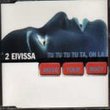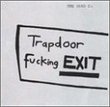| All Artists: Beethoven, Fine Arts Quartet Title: Late String Quartets Members Wishing: 0 Total Copies: 0 Label: Everest Records Release Date: 6/18/1996 Genre: Classical Styles: Chamber Music, Historical Periods, Classical (c.1770-1830) Number of Discs: 3 SwapaCD Credits: 3 UPC: 723918905624 |
Search - Beethoven, Fine Arts Quartet :: Late String Quartets
 | Beethoven, Fine Arts Quartet Late String Quartets Genre: Classical
|
Larger Image |
CD DetailsSimilar CDs |
CD ReviewsHighly recommended. Beats any other performance I've heard. 05/04/1999 (5 out of 5 stars) "First heard this group in the 60s. I've been eagerly awaiting this re-release on CD and got me a copy as soon as I heard it was out. The performance of Op 131 is exquisite, in my opinion surpassing the Budapest or Julliard quartets, which were the standard bearers of the day. Quartets like the Lindsey sound anemic compared to the life and freshness the Fine Arts Quartet bring to the music. The Guarneri and the Tokyo quartet performances on CD were better, but still left me unsatisfied. Thank you Everest for putting out this wonderful set." Best performance of Opus 132 William Mealiffe | Richmond, CA United States | 11/06/2000 (4 out of 5 stars) "As a set, the Fine Arts Quartet's performances of the late Beethoven quartets is not my first choice, but their performance of the Opus 132 quartet is the best I've heard. This quartet, like most of Beethoven's music, makes a very direct emotional appeal via the most well-constructed, finely engineered music on every scale from the grandest down to the smallest, ever written. Of the late Beethoven quartets, Opus 127 and especially Opus 131 deservedly have a higher reputation for organic coherence, but the Opus 132 is better than its reputation in that respect. One cannot hear this by listening to the performance of most of the groups who play it, however. The Fine Arts enables the listener to hear how well the piece coheres throughout. It does this partly by consistently capturing a quality that pervades the quartet, namely its sickbed atmosphere. (That will raise a few eyebrows.) This quartet, perhaps even more than the Grosse Fuge (Opus 133), makes a very sustained, direct assault on our sensibilities. Opus 133 throws rocks at its listeners. Opus 132 makes us feel exactly what it is like to be desperately sick in a muggy hospital room. Everything that is most important to us becomes agonizingly, obsessively clear. The slow movement has always been associated with the spiritual qualities that a sick person manifests when recovering from a severe illness. (This is the only movement that some persons, including the late Aldous Huxley, have paid any attention to. That is their mistake.) The slow movement has alternating sections of 2 types roughly subtitled "Sacred hymn of thanksgiving of a recovering patient to the godhead" and "Feeling new strength". The Fine Arts Quartet captures better than any other group the sustained emotional power of the "thanksgiving" and integrates the "feeling new strength" sections into the whole better than other performers. Some will find this performance too intense, toooverpowering, but I find it just right, even down to the exaggerated viola sforzando on the F-above-middle-C in the middle of bar 190 during the climax towards the end of the movement. The viola player picked exactly the right spot to exaggerate. The musical instincts of the Fine Arts Quartet are invariably excellent on this performance. The players never sound "mannered" like many quartets: all the Fine Art's expressiveness is well placed. This is true also of the other movements. The sickroom-quality is apparent in the 2nd movement (Allegro ma non tanto) as well, this time as obsessive, compulsive repetition of the melodic fragments of the scherzo. Most performances of this movement are truly boring, picking a tempo that is either too slow, or overcompensating for the repetition by playing it too fast, or by trying to mask the repetition by adopting various mannerisms. The Fine Arts simply finds the right tempo, and lets the obsessive repetition speak for itself. It works. The heavenly hurdy-gurdy of the trio section is also finely played. I'll just end by saying that the other movements are played just as well. The Fine Arts bring out the tense, anxious qualities of the 1st movement, and they bring out the downright swampy quality of the last movement. A performance not to be missed."
|

 Track Listings (11) - Disc #1
Track Listings (11) - Disc #1
